
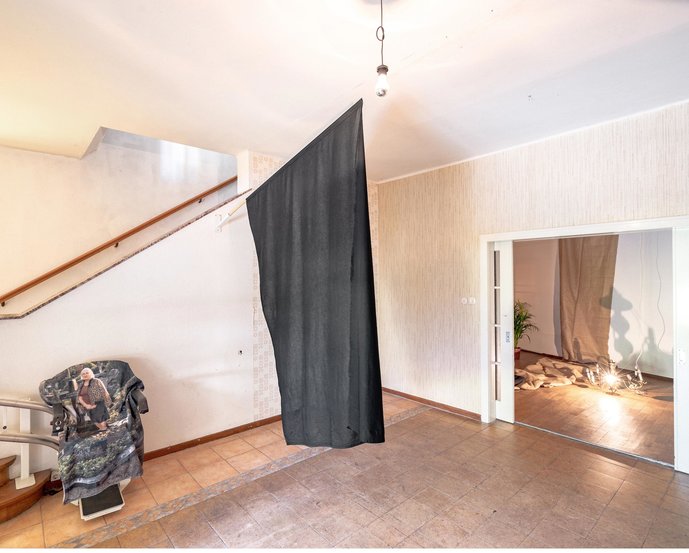
© Felix Buchholz

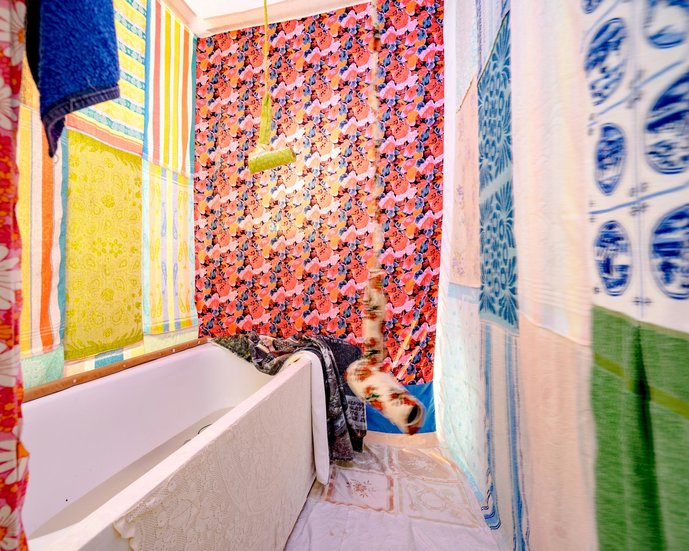
© Felix Buchholz

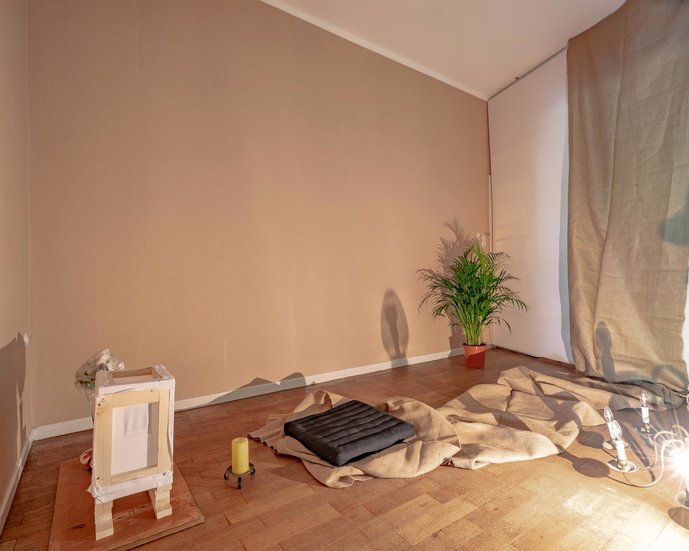
© Felix Buchholz

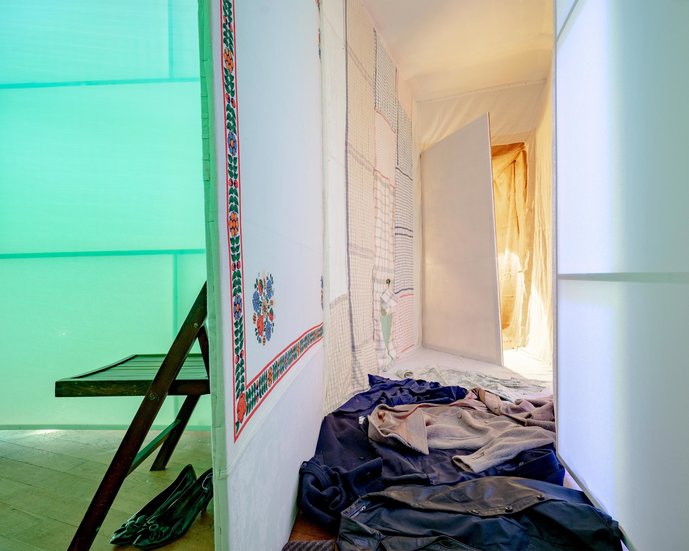
© Felix Buchholz

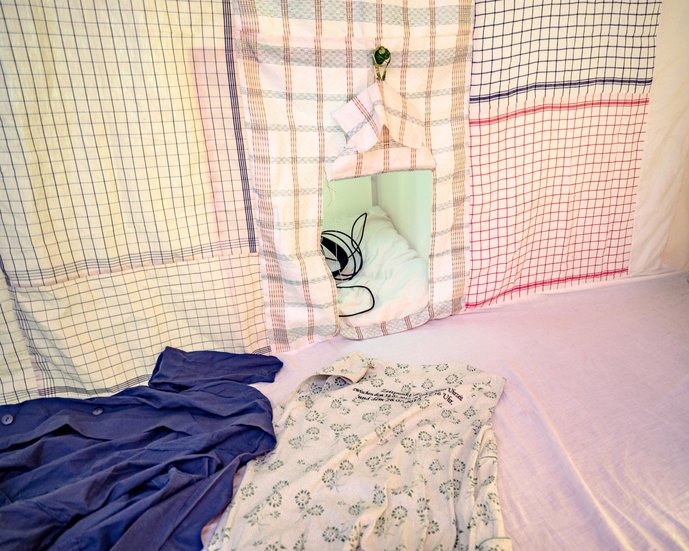
© Felix Buchholz

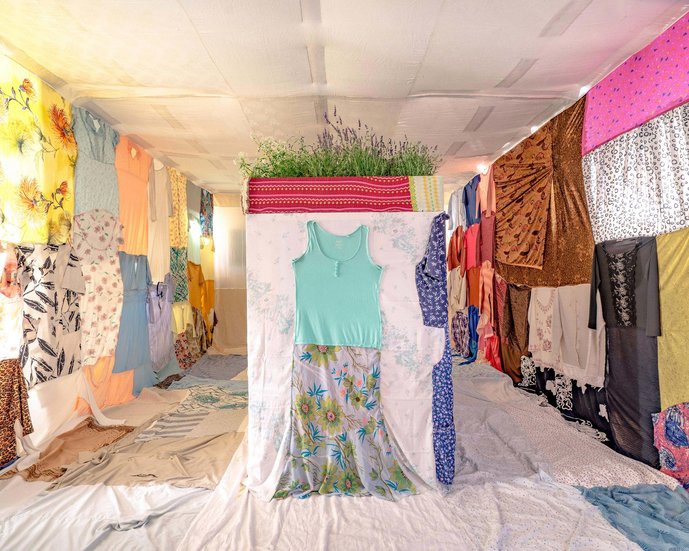
© Felix Buchholz

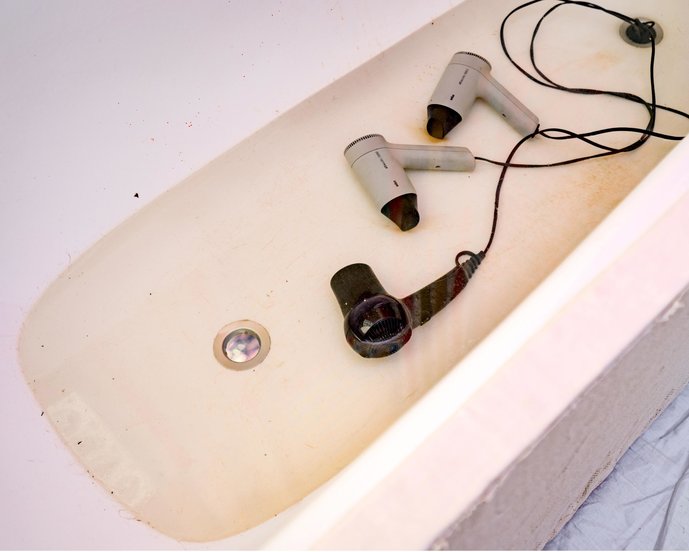
© Felix Buchholz
If you asked the artist, he would give you the same information, therefore I presume I can also say the following: in July 2018, Felix Buchholz reconstructed the apartment of his grandmother who had passed away. Located on Gellertstraße 14, it was an old factory owner’s villa in the western part of Karlsruhe. The walls and ceiling are reconstructed out of the very same material from the apartment, sewn together and attached to a hanging construction. One enters the “apartment”, the installation, through concept alone, without shoes and as long as one wants. When I enter, I know that Felix Bucholz was the only person with whom the grandmother had any contact before her death. He had told me how their meetings had taken place, what they then did, how it looked in her apartment which she had hardly left recently, what he knew about her life, her particularities and her views, and what this had to do with his father, mother and his own biography. I knew, that one day when he wanted to pass by for a visit, announced as usual per postcard, she didn’t answer the door for the first time. And when the police broke down the door a couple of hours later, it became clear that it was not the first time this has happened, but several days had already passed since a neighbour had called them about the smell. And that only two days before his visit, she had been buried, alone. She had had a precise image of how she wanted her own burial, which she had discussed with Felix. So it was not much more than a missed opportunity, a farewell ritual where Felix himself was not able to bid farewell.
On entering the installation, I have the image of this person on the back of my neck, and so I sometimes feel like I have to turn around, even though I know I am alone in the fabric flat. I go into the living/bedroom, in the centre of which there is a bed, a coffin, a laying out of the dead where one can or should lie down or at least ask oneself whether one should lie down or not. Lavender is planted on top. Fabric, moths, lavender. When I lie down in the sarcophagus, fluorescent tubes disguised behind some fabric light up, they click and hum and I am scared to death. It is a bit like lying on a dissection table, but it is not so unpleasant that I want to leave immediately. I still feel as if I am being observed through the thin fabric walls illuminated from the outside by the artist, i.e. Felix Buchholz.
The capacity for interpretation is a genuinely artistic moment, only, the more a story lays claim to individual experience or authenticity, the more insidiously it becomes clear that with the assumed death of his grandmother, Felix has become her sole heir in every sense - the capacity to interpret her life, and so he celebrates a second wake here. A hairdryer goes off in the bathroom, I think, aha, someone else is here after all, before that I was scared to death by the noise that tears me out of my unsuspecting posture, the contemplative situation. I sneak into the bathroom, where some hairdryers are hanging from the ceiling, now flapping wildly back and forth in the room, from the recoil of the hairdryer pressure, which must have come from nowhere. In the hallway, which he had told me was also used as a kitchen, there is a small hole in the fabric, a cave for your head in the wall, an invitation to lie on your back and watch the video above you of the original but emptied flat, while Felix describes it. As I lie there with my feet cut off from my head and placed in his late grandmother's hallway, I think if she could see this, it would be a very beautiful one-minute sculpture. Still, I can't shake the feeling that I am being watched.
35m2 altogether. I go through the apartment one more time. On the way out I put on my shoes again, standing there in a fine line. In the foyer of Gellerstraße 14, where I find myself again, one finds a hand towel lying in the lift attached to the staircase, printed with a photo of the woman who is Felix’s grandmother. She is wearing a leopard print piece of clothing and looks very chic. It is quite macabre with her lying so flat in the stairlifts. But she looks quite happy. There is a kind of shrine on the floor next to it and above all this is a black flag, just like a wake. And Felix the guardian of death? – because you mustn’t forget that no-one could have seen the exhibition without him having opened the door, and without him being there when you come out. Had you spoken to him inside, while the hairdryers were still turning and perhaps he would have offered you a glass of water.
Text by Judith Milz
Location: Villa Gellert, Gellertstraße 14, Karlsruhe
Supervision: Prof. Omer Fast, Barbara Kuon, Prof. Vadim Fishkin, Prof. Heike Schuppelius